Innate Immunity
Found in all animals/plants; effective from birth (before any exposure to pathogens); nonspecific and no memory
Innate Immunity relies on
a small set of receptors that bind structures common to a group of viruses, bacteria, or other microbes
Examples of innate immunity
Skin, mucous, natural killer cells, inflammatory response
Adaptive Immunity
Only in vertebrates; activated after the innate immune response and develops more slowly; highly specific; has memory (to provide enhanced protection)
Adaptive Immunity relies on
A vast arsenal of receptors, each of which is very specific for a particular pathogen
Examples of adaptive immunity
Antibodies, cytotoxic cells
1st step of inflammatory response
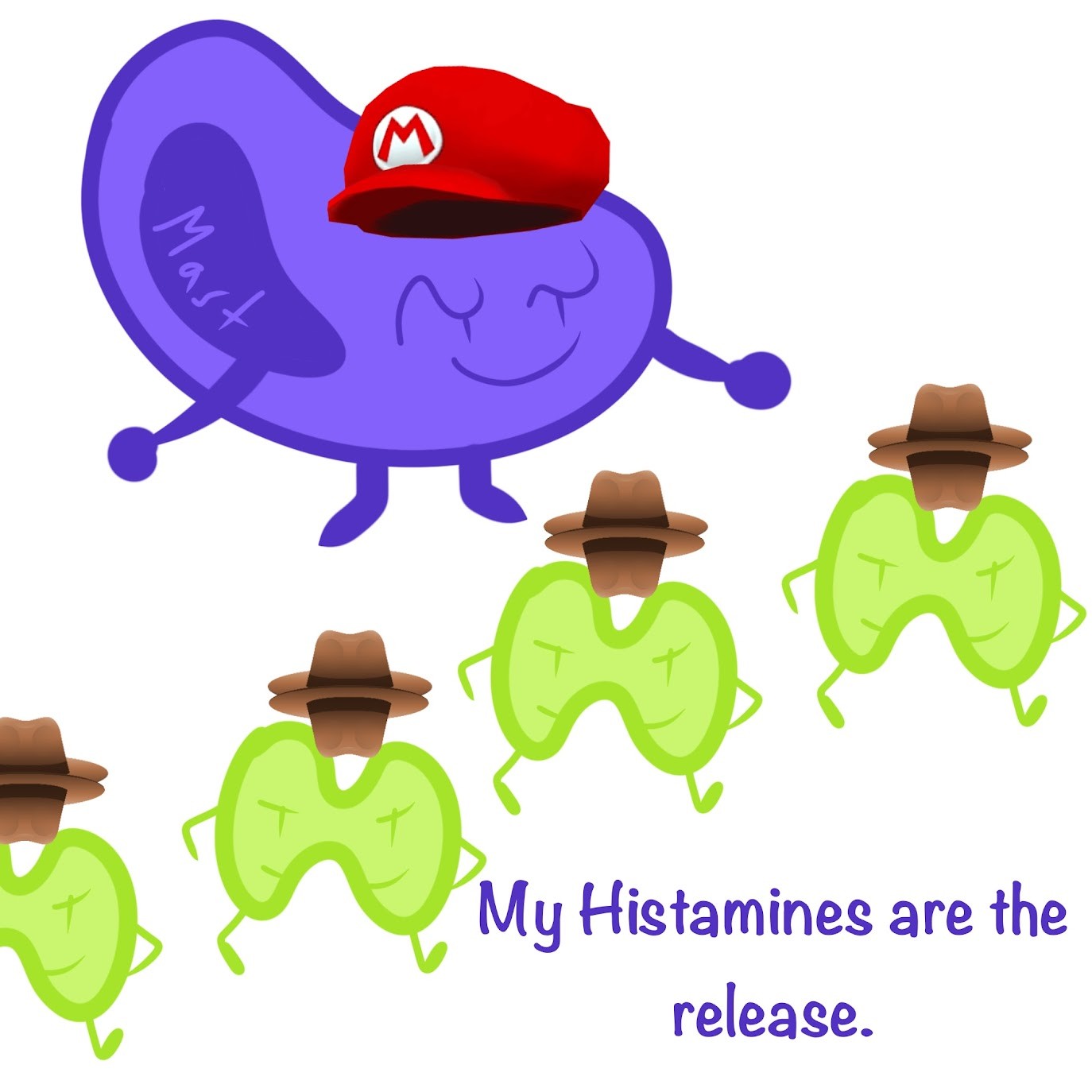
Mast cells, found in the connective tissue, release histamine
2nd step of inflammatory response
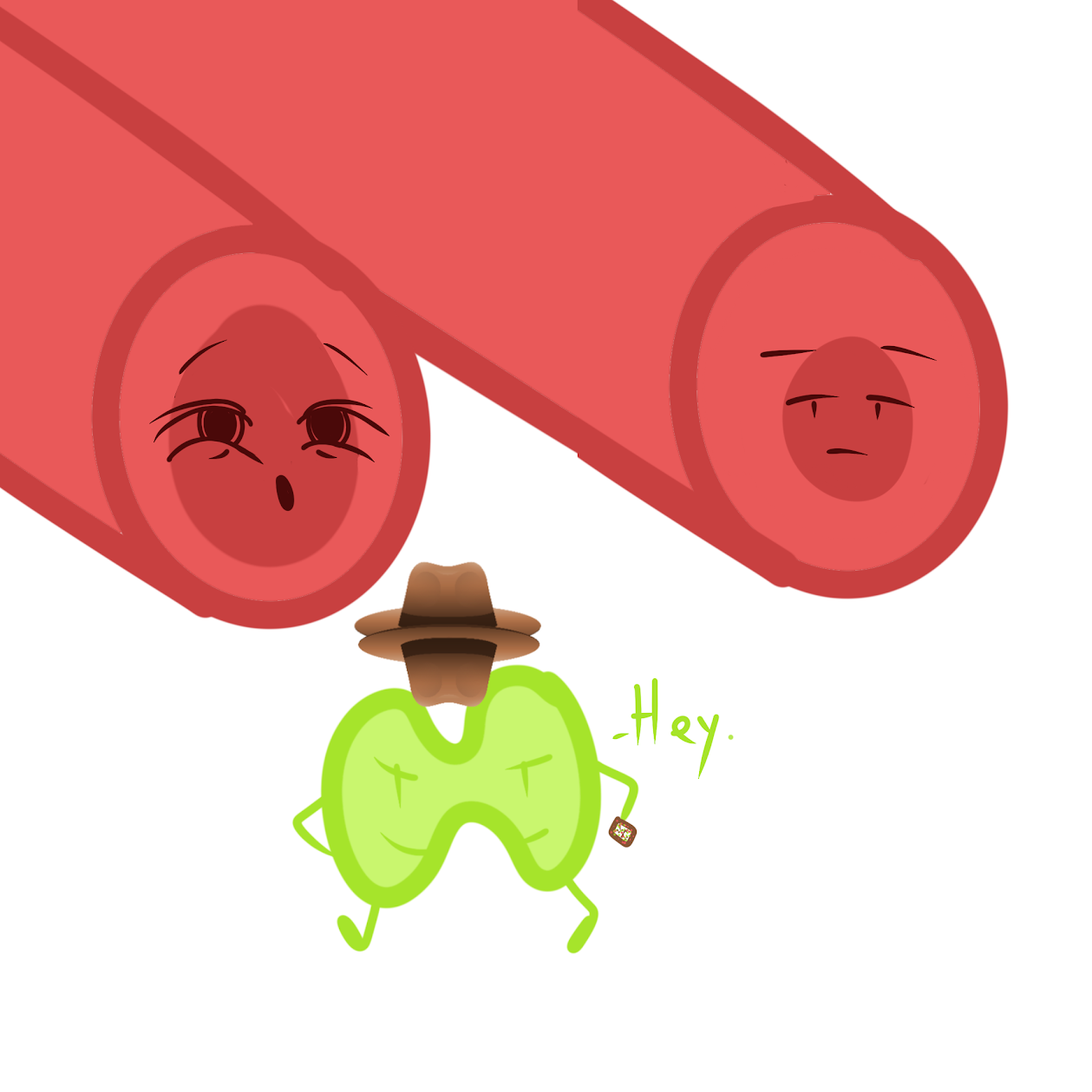
Histamine triggers blood vessels to dilate and become more permeable
3rd step of inflammatory response

Activated macrophages release cytokines that recruit neutrophils
4th step of inflammatory response
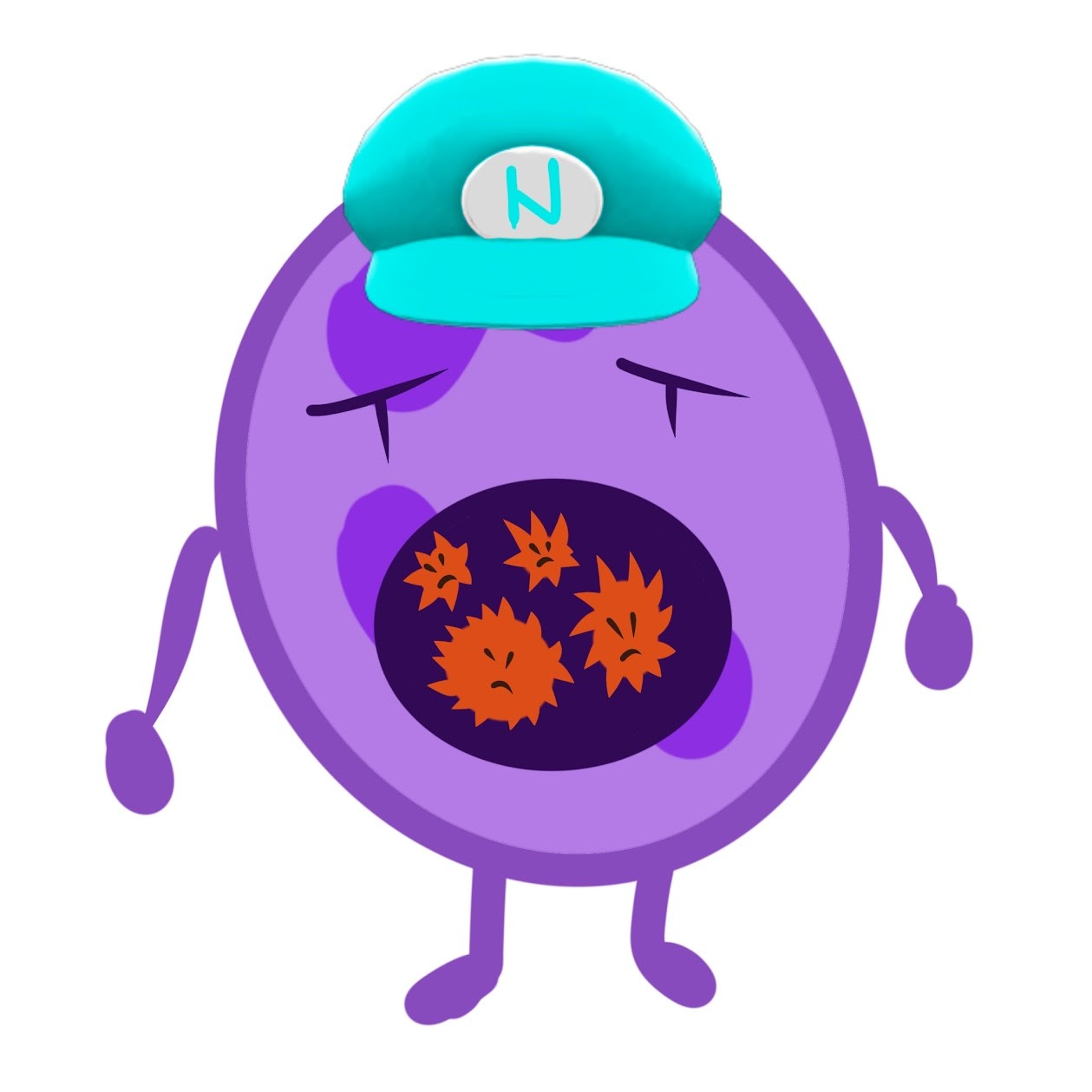
Neutrophils digest pathogens and cell debris (phagocytosis); the tissue heals.
Mast cells
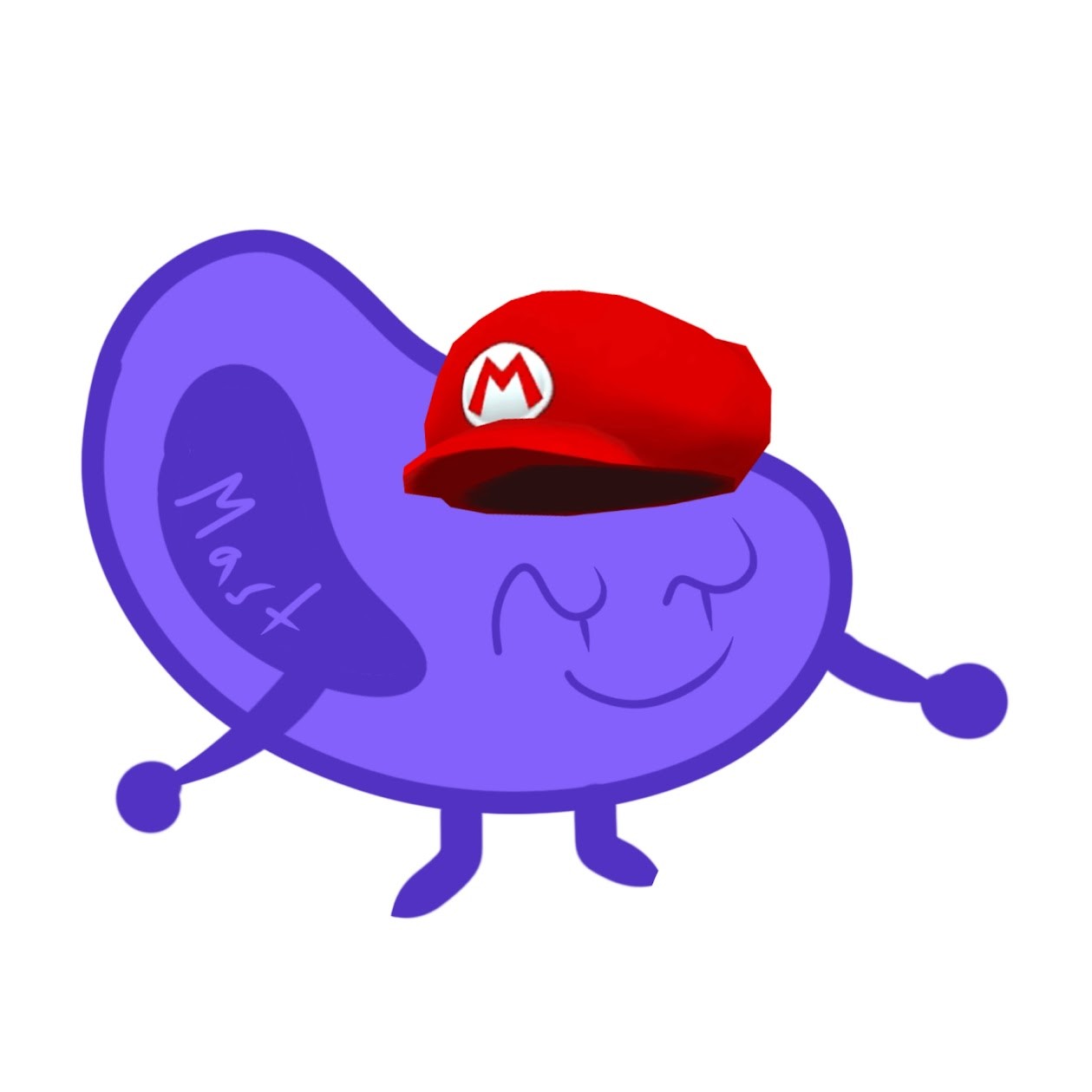
a type of phagocyte that releases histamines; recruits macrophages and neutrophils; induces local inflammation and involved in wound healing; triggers blood vessels to dilate via histamines
Macrophages

Found throughout the body (some migrate, some live in a permanent spot); releases cytokines; eats foreign pathogens
Neutrophils

A type of phagocytic cell that circulates through the blood to infected tissue; releases toxins and recruits other immune cells to the infected site
Histamines

Signaling molecules that triggers blood vessels to dilate and become more permeable
Cytokines

signaling molecules that recruits neutrophils/signals the presence of a pathogen to immune cells to induce a response
Types of phagocytic cells
Neutrophils, macrophages, dendritic cells, eosinophils
Dendritic cells
Mainly populate tissues that contact the environment (ex. skin)
Eosinphils

Often found beneath an epithelium, important against multicellular invaders (like parasitic worms)
Natural killer cells
Circulate through the body and detect abnormal cells; do not engulf but instead release chemicals leading to cell death
Basophils
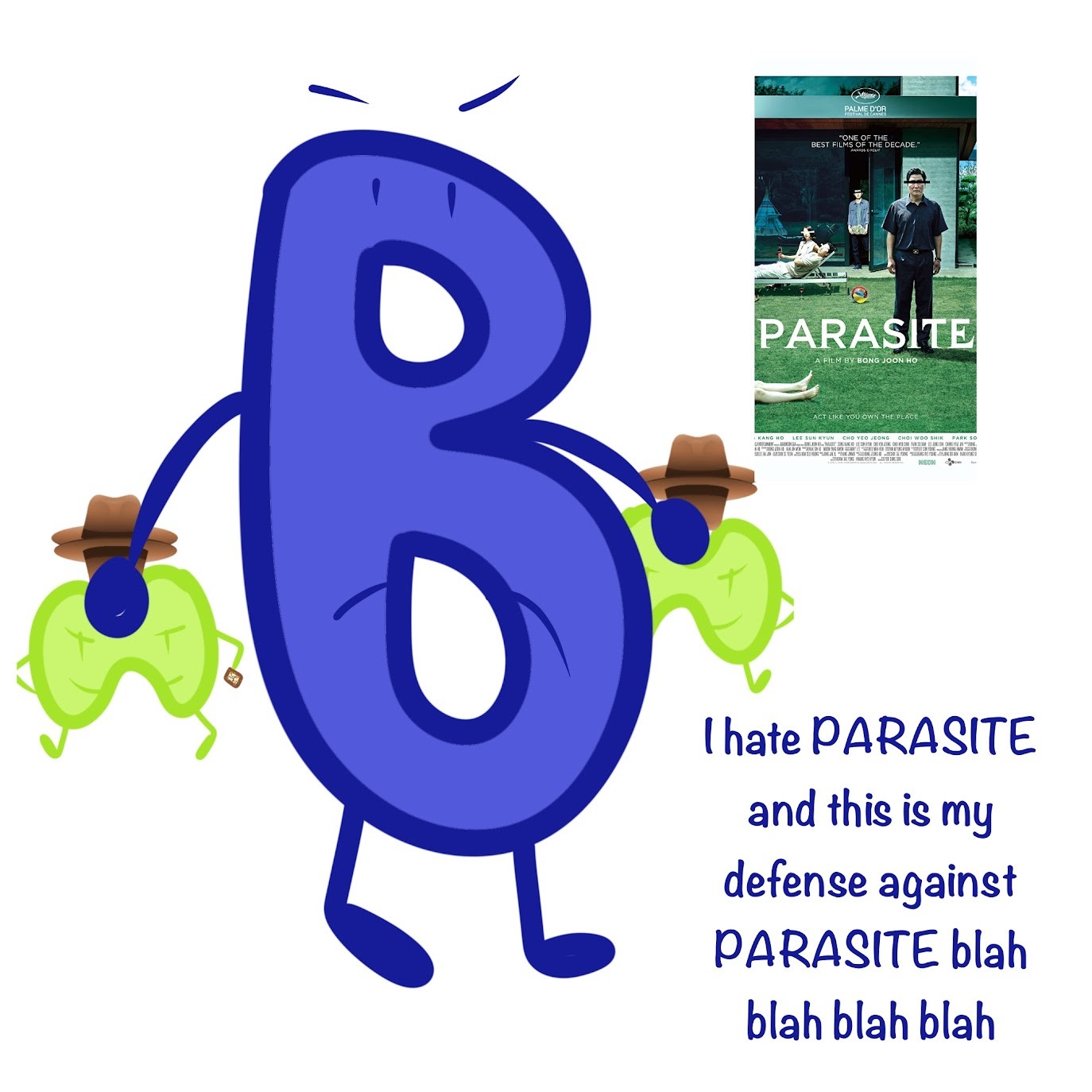
Involved in local inflammation, defense against parasites; releases histamines
B-cells
Humoral response; remains and matures in bone marrow
B for Bone Marrow and HUMOR
T-cells
Cell-mediated response; migrates to and matures in the thymus
T for Thymus and TCM
Where do ALL blood cells originate from?
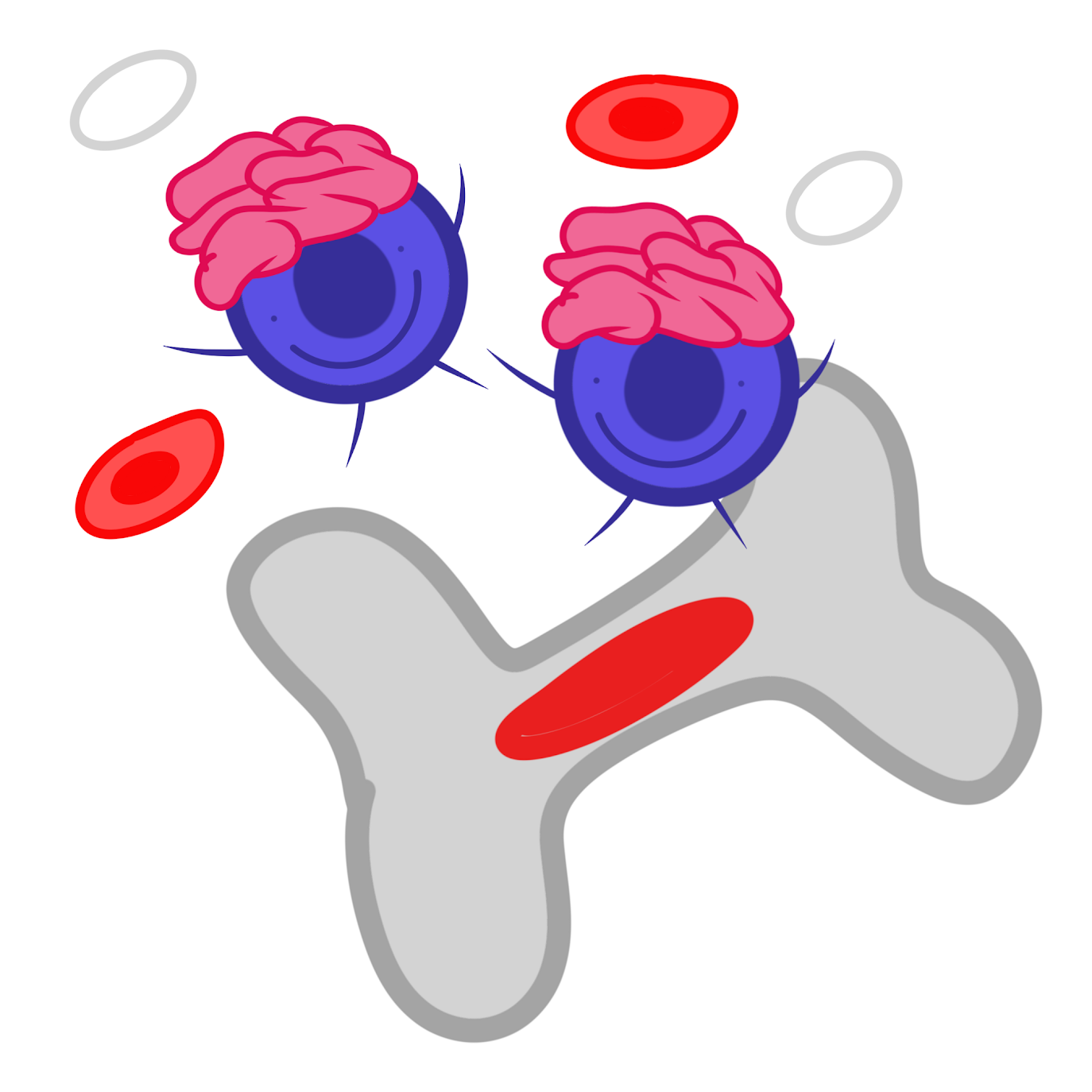
Stem cells in bone marrow
What do B-cells make?
Antibodies (Abs)
Antibodies and B-cells
Antibodies are secreted into the liquid (humoral) component of blood and serve as membrane-bound receptors for B-cells
3 types of T-cells
Helper T cells
Cytotoxic T cells
Regulatory T cells
Antigen
A substance that elicits a response from a B or T cell
Epitope

The accessible part of an antigen that binds to an antigen receptor
B-cell antigen receptors

Y-shaped with two identical heavy chains and two identical light chains; both comprised of constant (C) and variable (V) regions
Between constant and variable regions, which region provides antigen specificity?

Variable regions
What causes heavy and light chain variable regions to have unique binding sites?
Asymmetry
How are B cells activated?
A B cell antigen receptor binds to an antigen
T-cell antigen receptors
Consists of two different polypeptide chains (called α and β); tips are variable (V) while the rest of the region is constant (C)
How are T cells activated?
T cells bind to antigen fragments on a host cell surface by MHC molecules (class I and II); not specific
MHC Class I
Found on all host nucleated cells (basically everything except red blood cells); displays endogenous antigens to cytotoxic T cells
ALPHABETICAL: ENDO CYTOTOXIC ONE
MHC Class II
Found on antigen-presenting cells (APCs) like B cells, Dendritic cells, and Macrophages; displays exogenous antigens to helper T cells
ALPHABETICAL: EXO HELPER TWO
4 characteristics of the adaptive immune system (for B/T cell development)
-Diversity of lymphocytes/receptors
-Self-tolerance
-B/T cells proliferate after activation
-Immunological memory
Diversity is provided by the _____ gene structure, which combines variable elements
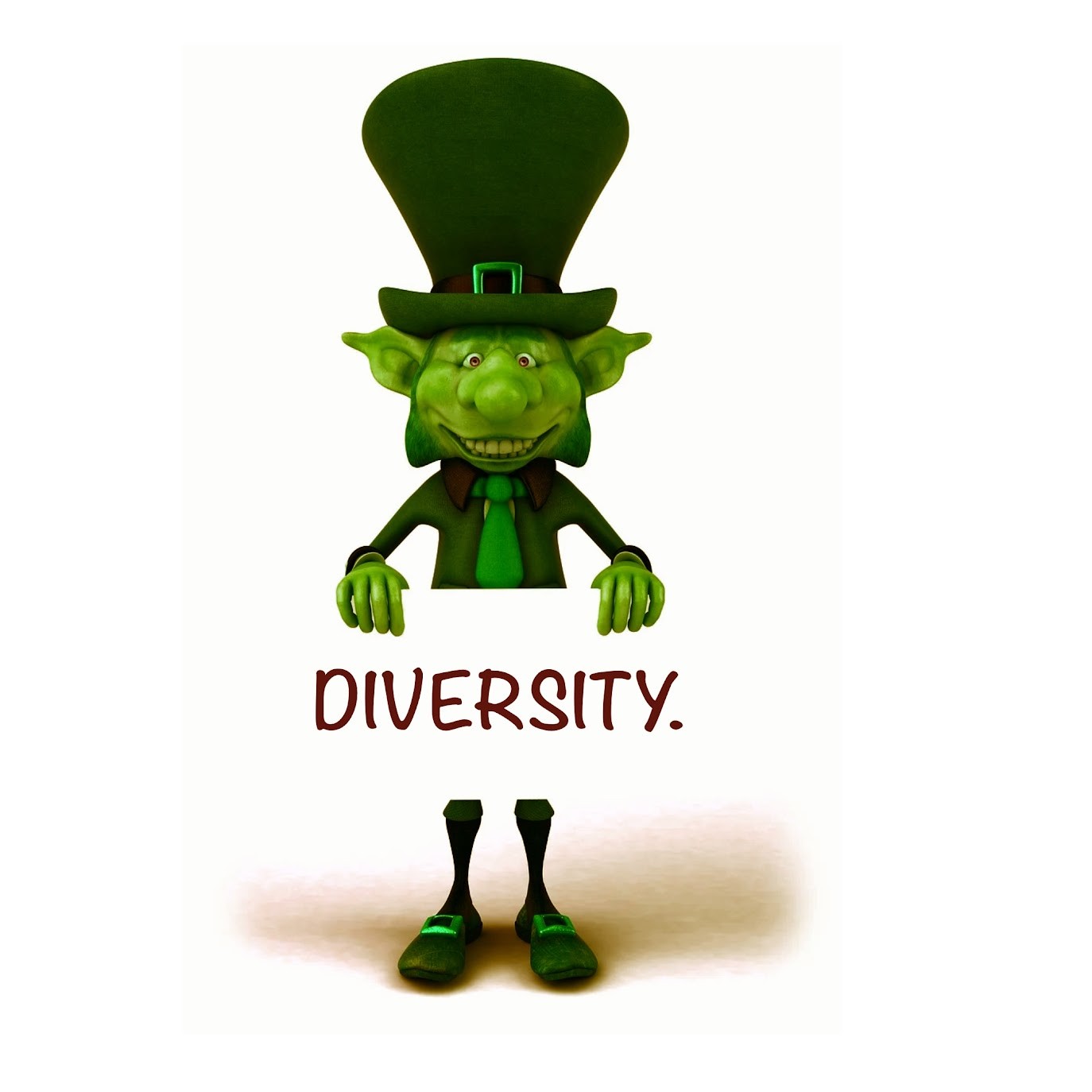
Immunoglobulin (Ig)
Effector cells
short-lived and acts immediately against the antigen
Effector B cells

Plasma cells (secrete antibodies)
Literal humoral.
Effector T cells
Helper T cells and cytotoxic T cells
Memory cells
Long-lived and can give rise to effector cells if the same antigen is encountered again
Helper T cells trigger which types of immune responses?
Humoral (production of antibodies by B cells that neutralize pathogens) and Cell-mediated (activation of cytotoxic T cells that kill infected cells)
What type of T cells are the effector cells in cell-mediated immune responses?

Cytotoxic T cells
Activation of B cells requires two things:

-An antigen
-Cytokines from Helper T cells
A B cell proliferates and differentiates into two cell types:
-Plasma cells (antibody secreting effector cells) and Memory B cells (quickly convert into plasma cells upon future exposure to the same antigen)
How do antibodies act/function by?
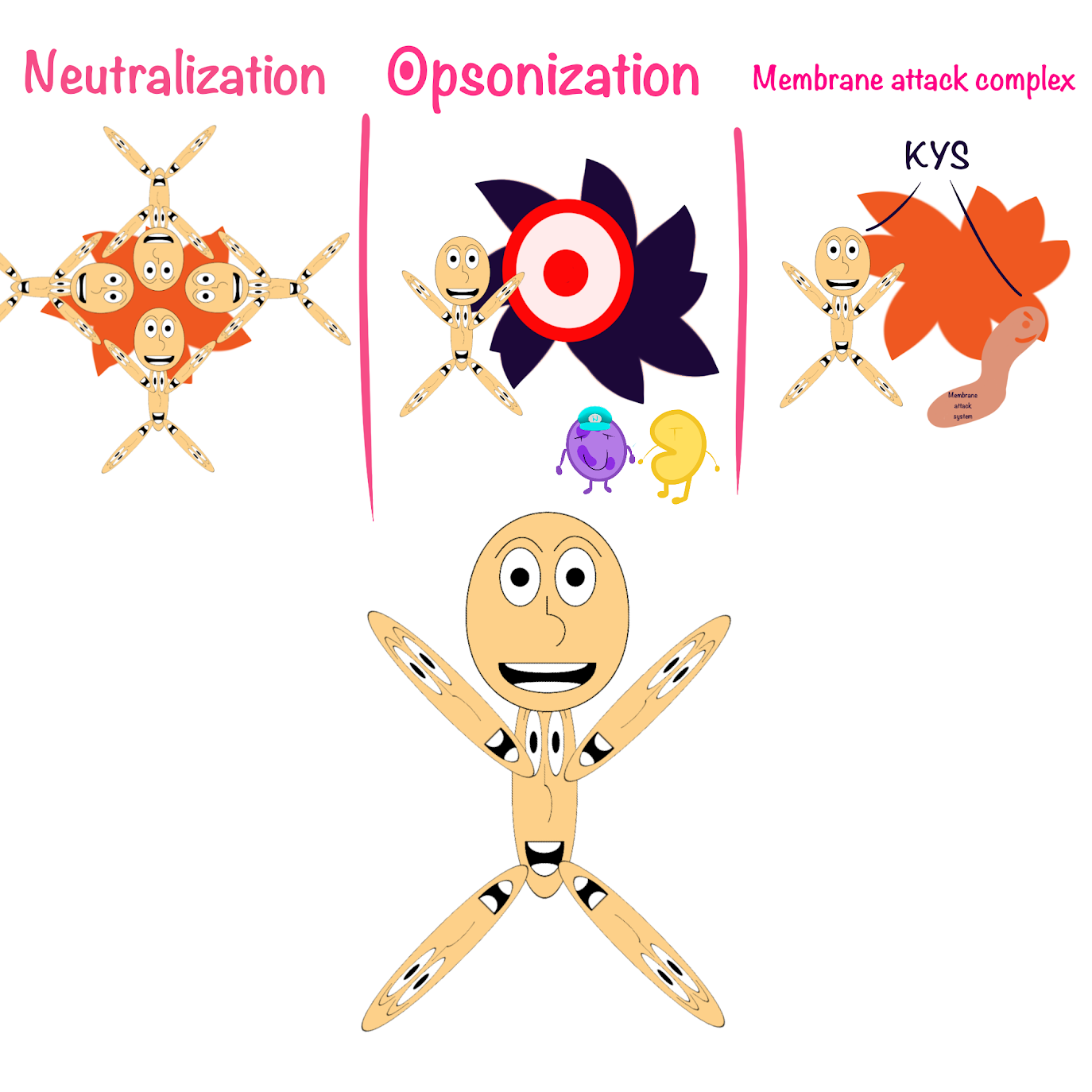
-Neutralization (interfering with pathogen activity)
-Opsonization (marking pathogens for destruction)
-Working with the complement system to generate a membrane attack complex to lyse the pathogen
Do antibodies kill pathogens?

No
Characteristics of viruses
-Cannot reproduce or carry out metabolism outside of a host cell
-infectious particles consisting of nucleic acid enclosed in a protein coat
Viral genomes
Comprised of one linear or circular nucleic acid molecule encoding 3 to ≈2,000 genes; nucleic acid arranges as double or single-stranded DNA/RNA
Capsid

Protein shell that encloses the viral genome- built from protein subunits (capsomeres)
Viral envelopes
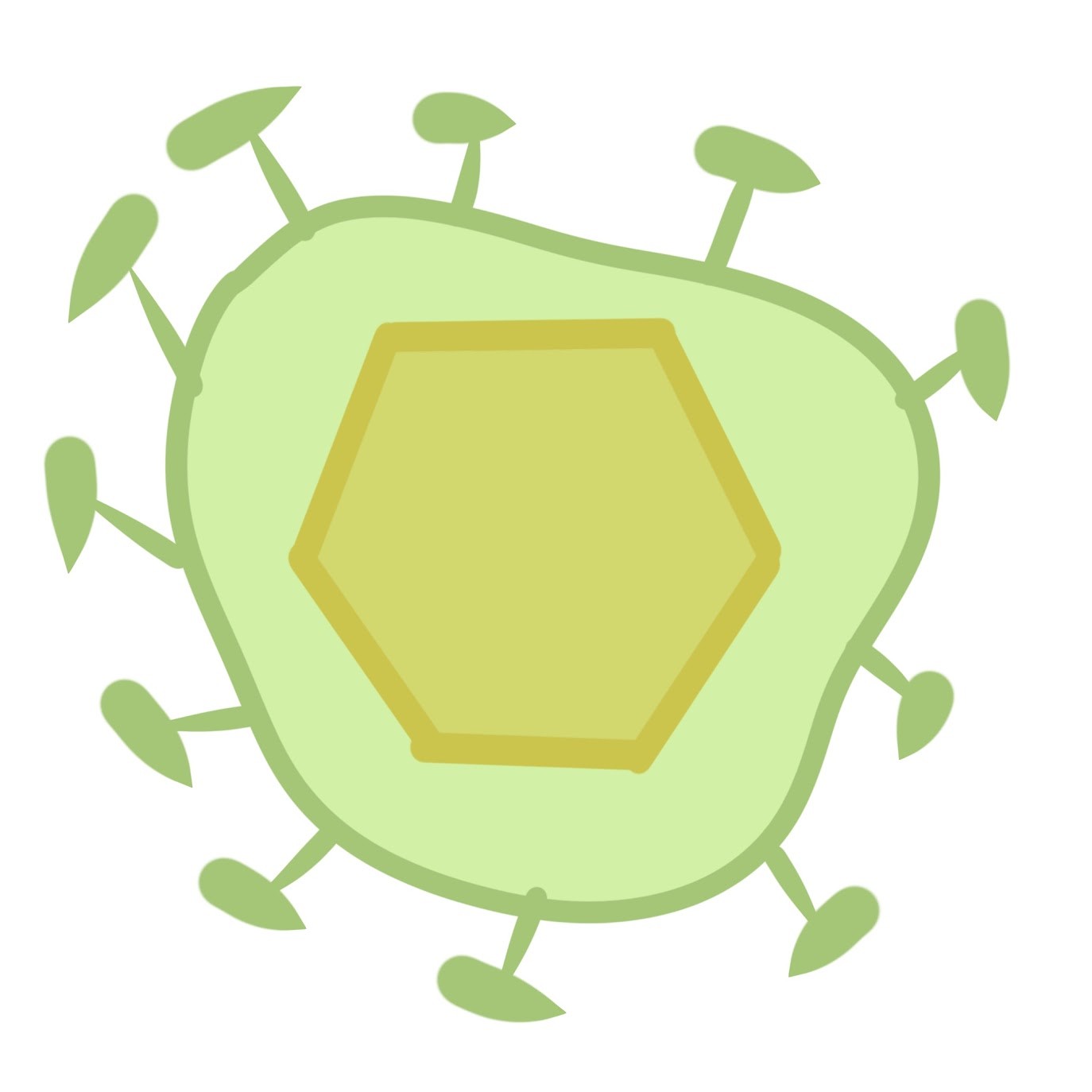
-Derived from membranes of host cells -surround the capsids of many viruses found in animals
-Combination of viral and host cell molecules
-Includes glycoprotein spikes that aid infection
-Includes influenza and coronaviruses
Filamentous (Helical/rod-shaped) Viruses

-Long and cylindrical
-Includes many plant viruses
-First discovered virus
Icosahedral Viruses

-Polyhedron with 20 triangular faces
-May contain protein spikes
-Causes minor infections (common cold, sore throat, pink eye)
-Rarely causes serious illness/death
Bacteriophages (Phages)
-Viruses that infect bacteria
-Most complex capsids
-Contains elongated icosahedral capsid heads with DNA
-Contains rod-shaped tailpieces that attach to the host and inject DNA
Host Range
A limited number of host cells that it can infect; includes species and cell types
Lytic cycle
Produces new phages and lyses the host's cell wall, releasing progeny viruses
Virulent phages
Phages that reproduces only by the lytic cycle
Lysogenic Cycle
Replicates the phage genome without destroying the host; the viral DNA molecule becomes incorporated into the host cell's chromosome and thus copies the phage DNA (prophage) into daughter cells; can switch to the lytic cycle through an environmental stressor
Temperate phages
Phages that use both the lytic and lysogenic cycles
3 types of single-stranded RNA genomes in animal viruses:
-RNA serves directly as mRNA
-RNA serves as template for mRNA synthesis (viral enzyme required)
-RNA serves as template for synthesis of DNA that gets integrated into the host genomic DNA (aka retroviruses)
HIV is what kind of virus?
Retrovirus (RNA serves as template for synthesis of DNA that gets integrated into the host genomic DNA), which uses the enzyme reverse transcriptase to copy their RNA into DNA
Provirus

Reverse-transcribed viral DNA that integrates into the host genome (remains a permanent resident)
Replicative cycle of retroviruses
The host's RNA polymerase transcribes the proviral DNA back into the RNA molecules; functions both as mRNA for synthesis and as genomes for new virus particles released from the cell
Prokaryote characteristics
-Thrive almost everywhere
-Most abundant & first organisms on earth
-All have a plasma membrane, cytoplasm, double-stranded DNA genome, and ribosomes
-Mostly unicellular
-Much smaller and simpler than eukaryotes
-Lacks a nucleus
-Most of the genome consists of a circular chromosome
-Usually have smaller rings of independently replicating DNA (plasmids)
-Reproduce by binary fission
Cell wall- bacteria vs archaea

Bacteria have peptidoglycan
Archaea lack peptidoglycan
DNA replication- bacteria vs archaea
Both have a single origin of replication, but archaeal DNA replication is more similar to that of eukaryotes
Gene expression- bacteria vs archaea
Archaeal transcription and translation are more similar to those of eukaryotes
Gram-negative bacteria
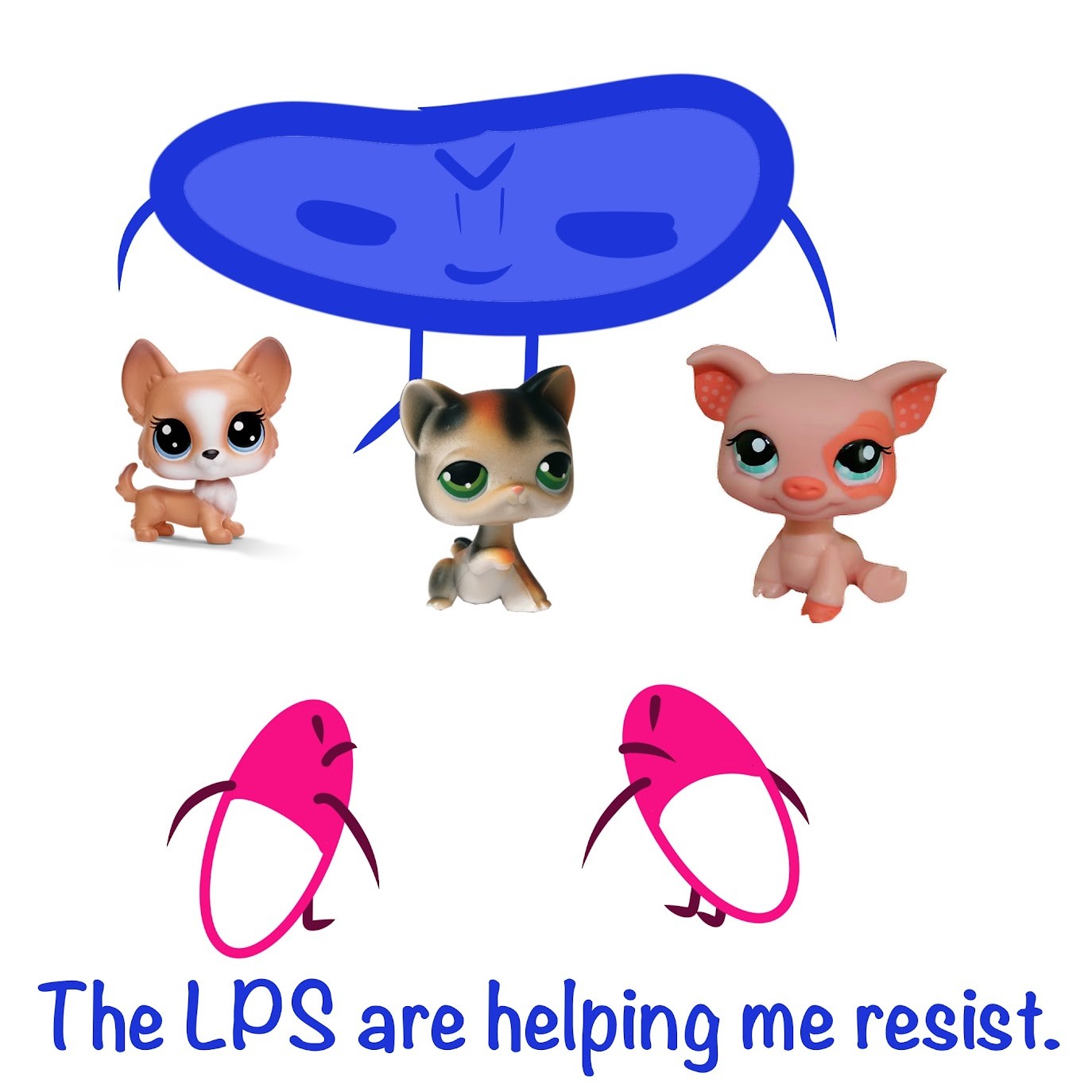
Have less peptidoglycan and an outer membrane that can have toxic lipopolysaccharides (LPS); lipid portions of LPS are toxic, causing fever; more antibiotic resistant
Gram-positive bacteria
Simpler cells walls with a large amount of peptidoglycan and no outer membrane; antibiotics target peptidoglycan and damage bacterial cell walls; some are virulent and resistant
POSITIVE PETIDOGLYCAN
Capsule
Sticky polysaccharide or protein layer that covers some prokaryotes; allows adherence and can shield bacteria
Fimbriae
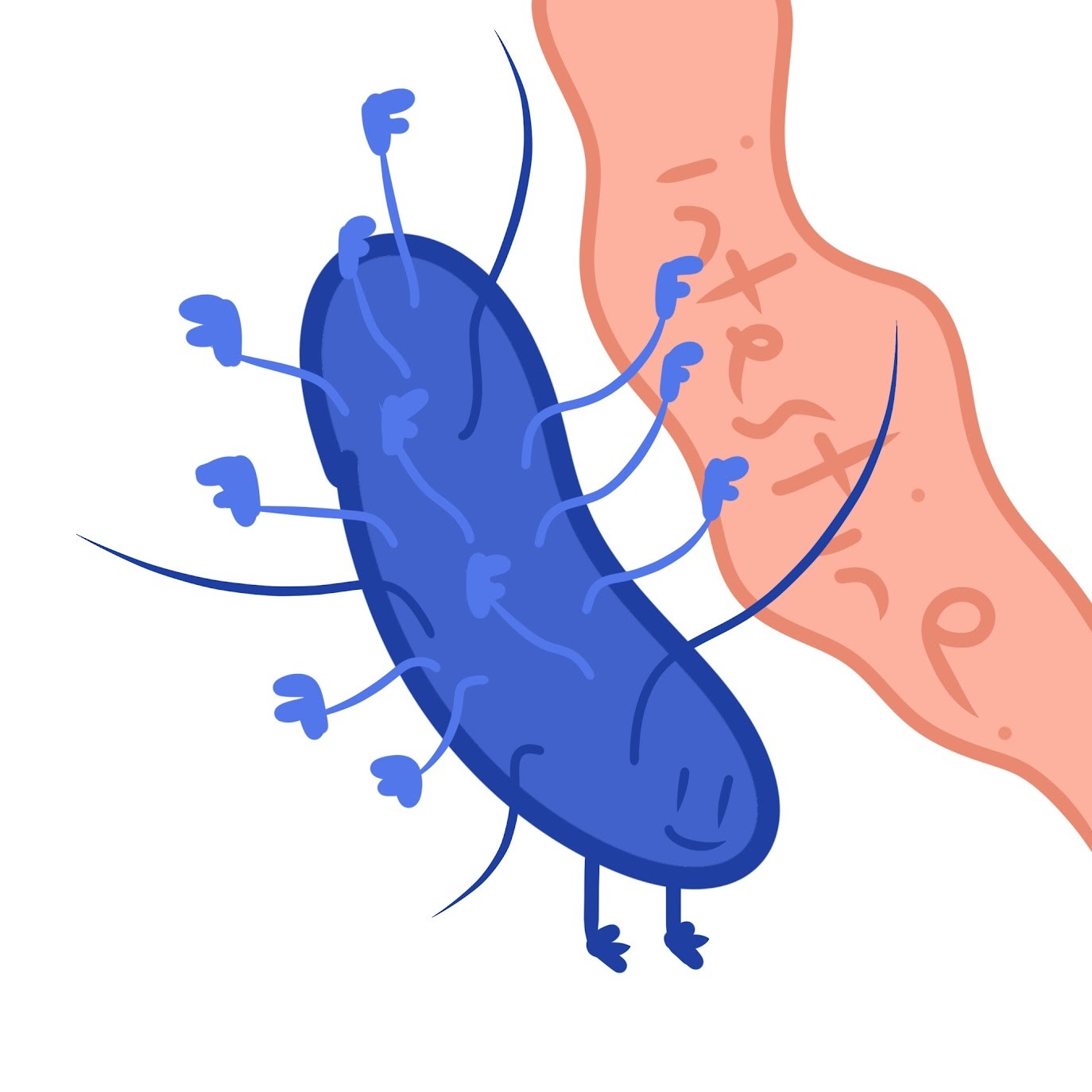
Extensions of some prokaryotes that help them stick to their substrate or other individuals in a colony
Pili
Longer than fimbriae; allow prokaryotes to exchange DNA
Flagella
used to propel motile bacteria
3 factors that contribute to genetic diversity in prokaryotes
-Rapid reproduction
-Mutation
-Genetic recombination (combining DNA from 2 sources, brought by transformation, transduction, and conjugation)
Transformation
Taking up and incorporation of foreign DNA from the surrounding environment (a nonpathogenic bacteria can be transformed to a pathogenic strain if exposed to DNA from a pathogenic strain)
Transduction
Movement of prokaryotic genes between bacteria by bacteriophages; usually results from accidents that occur during the phage replicative cycle
Conjugation

Process where genetic material is transferred between prokaryotic cells (always one way) via a pilus or "mating bridge"
F factor
Required for the production of pili (F for fertility)
F factor can exist either as a
Plasmid or segment of DNA within the bacterial chromosome
Cells containing the F factor as a plasmid (F+) function as _____ during conjugation
DNA donors
Cells without the F factor (F-) function as _____ during conjugation
DNA recipients
An F+ cell converts an F- cell to F+ if
a copy of the entire F plasmid is transferred
Hfr cells (High Frequency of Recombination)
A cell with the F factor built into its chromosomes also functions as a donor during conjugation
1st step of conjugation
An Hfr cell forms a mating bridge with an F- cell
2nd step of conjugation
A single strand of the F factor breaks and begins to move through the bridge
3rd step of conjugation
Crossing over can result in exchange of homologous genes
4th step of conjugation
Enzymes degrade any DNA not incorporated; recipient cell is now a recombinant F- cell.
Organismal Ecology
Studies how an organism's structure, physiology, and (for animals) behavior meet environmental challenges
Example: How do flamingos select a mate?
Population Ecology
Focuses on factors affecting population size over time
Example: What environmental factors affect the reproductive rates of flamingos?
Community Ecology
Examines how species interactions affect community structure and organization
Example: What factors influence the diversity of species that interact at this lake?
Ecosystem Ecology
Emphasizes energy flow and chemical cycling among the various biotic and abiotic components
Example: What factors control photosynthetic productivity in this aquatic ecosystem?
Landscape Ecology
Focuses on the exchanges of energy, materials, and organisms across multiple ecosystems
Example: To what extent do nutrients from terrestrial ecosystems affect organisms in the lake?
Global Ecology
Examines the influence of energy and materials on organisms across the biosphere
Example: How do global patterns of air circulation affect the distribution of organisms?
Climate
The long term (≥30 years) prevailing weather conditions in a given area; strongly influences the distribution of plants, which determines the location of terrestrial biomes
Features of Terrestrial Biomes
-Grades into each other (no sharp boundaries)
-Vertical layering (provides diversity)
-Dynamic and variable, but can have similar characteristics from convergent evolution
Ecotone
Area of integration between two biomes; may be wide or narrow
Vertical layering of Forests
-Upper canopy
-Low-tree layer
-Shrub understory
-Ground layer of herbaceous plants
-Forest floor
-Root layer
Terrestrial Biomes can be characterized by
-Distribution (regions/layers)
-Precipitation
-Temperature
-Plants (what plants present)
-Animals (what animals present)
Features of Aquatic Biomes
-Account for the largest part of the biosphere
-Less latitudinal variation
Marine Aquatic Biomes
-3% salt concentration
-Consists of oceans, which covers ≈75% of Earth's surface and has an enormous impact on the biosphere
Freshwater Aquatic Biomes
-<1% salt concentrations
-Influenced by the surrounding terrestrial biome, patterns/speed of water flow, and climate
Aquatic Zonations are defined by
-Light penetration
-Distance from shore
-Depth
-Temperature
Zones based on light penetration
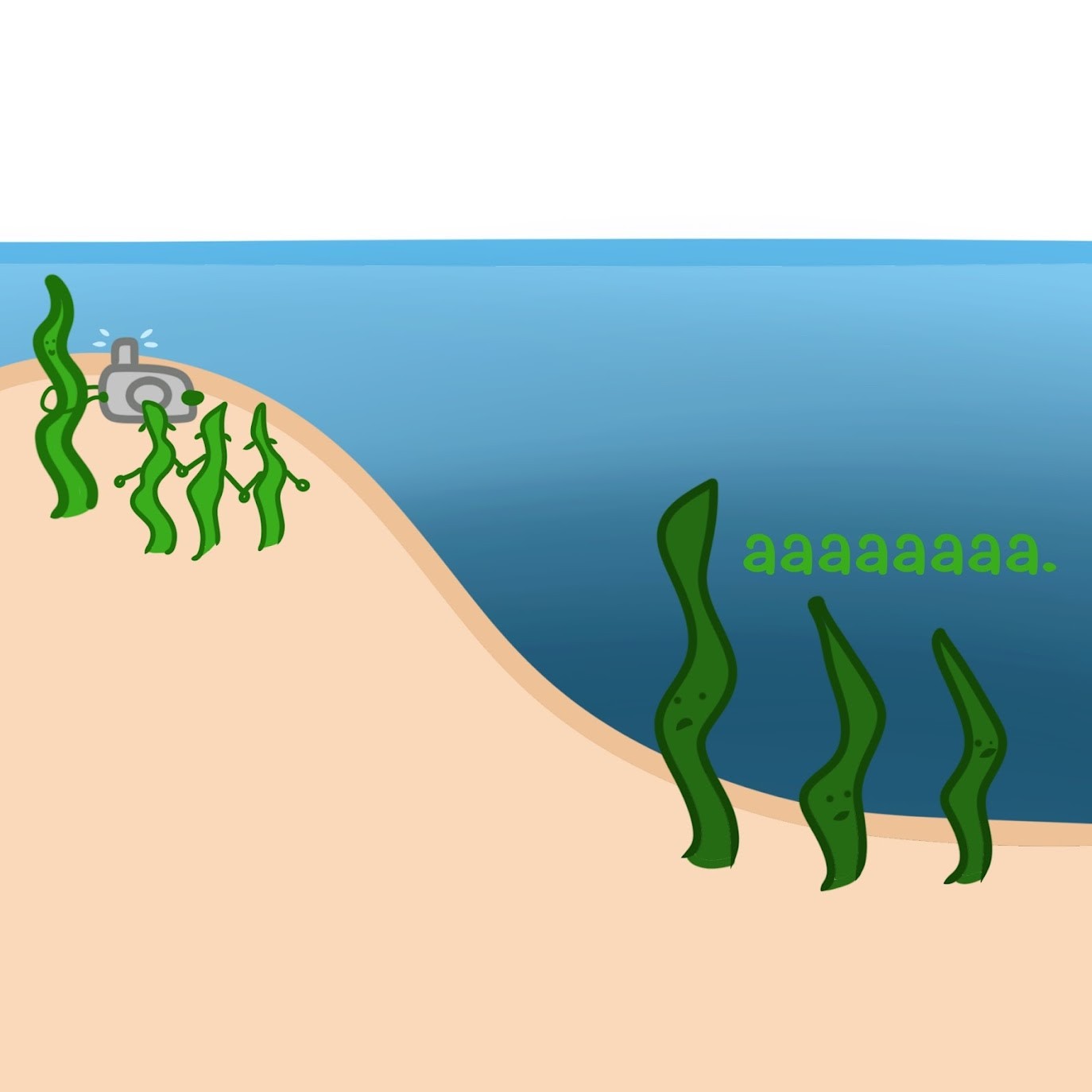
Photic zone (sufficient light for photosynthesis) and Aphotic zone (little light)
Zones based on depth

Pelagic (open water column outside of coastal areas), Benthic (sediment at the bottom of all aquatic zone), Abyssal (deep region of aphotic zone)
Benthos

Community of organisms living in the benthic zone
Detritrus
Falling dead organic matter that serves as an important food source for the benthos
Freshwater zones based on distance from shore
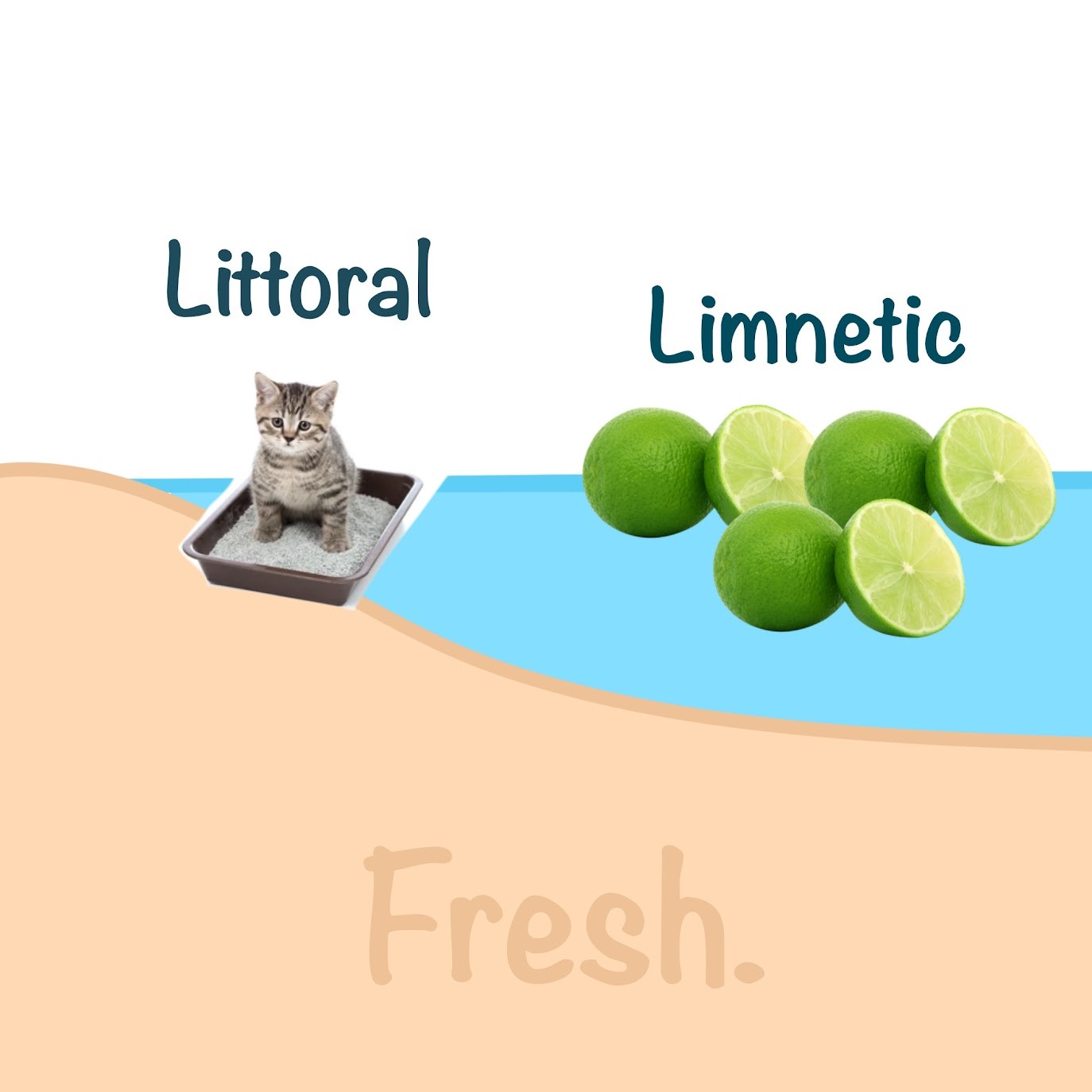
Littoral (shallow coastal water) and Limnetic (photic off-shore water)
Marine zones based on distance from shore
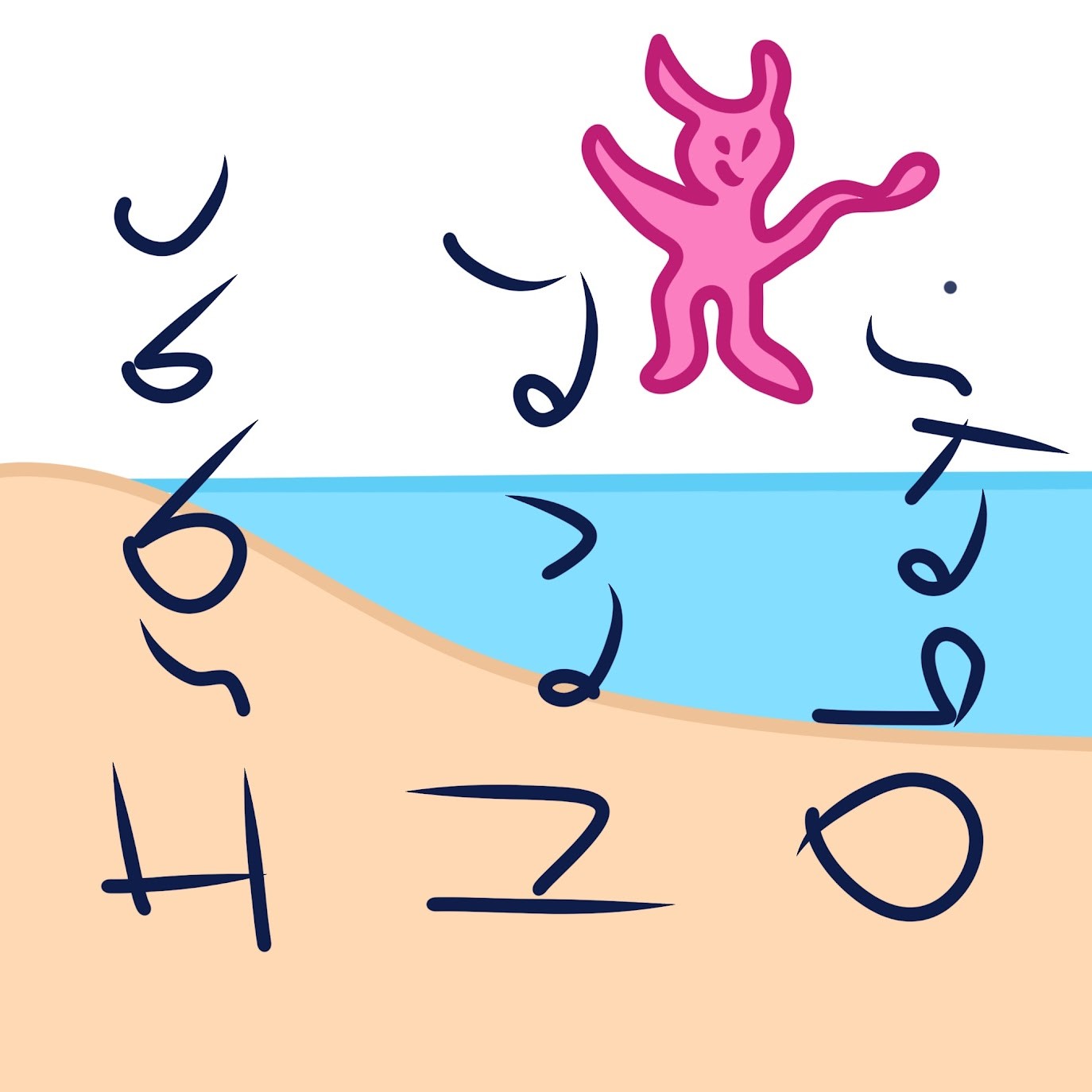
Interidal (area between high and low tide marks), Neritic (shallow coastal water), and Oceanic (deeper off-shore water)
Turnover
Semiannual mixing of lake waters (mixes oxygenated water from the surface with nutrient-rich water from the bottom)
Aquatic Biomes can be characterized by
-Physical environment
-Chemical environment
-Geological features
-Photosynthetic organisms
-Heterotrophs
Oligotrophic lakes
Nutrient-poor and generally oxygen-rich
Eutrophic lakes
Nutrient-rich and often depleted of oxygen
Species distributions are the result of
Ecological factors (biotic & abiotic) and evolutionary history
Dispersal
Movement of individuals away from centers of high population density or their area of origin
Biotic factors that influence distribution
-Predation
-Herbivory
-Competition
-Mutualism
-Parasitism
Abiotic factors that influence distribution
-Temperature (cells rupture below 0℃ and proteins denature above 45℃)
-Water (availability, cannot dry out)
-Oxygen (affected by water- oxygen diffuses slowly in water)
-Salinity (affects water balance via osmosis)
-Sunlight (intensity and quality [wavelength] affect photosynthesis)
-Rocks and soil (can organisms attach or burrow? pH levels? composition?)
What is the most significant influence on the distribution of organisms on land?
Climate
How does climate influence the distribution of animals?
-Attributed with temperature changes based on solar energy
-Burning of fossil fuels/deforestation causes shifting wind/precipitation patterns and is increasing the global temperature
Dispersion
The pattern of spacing among individuals within the boundaries of the population
Examples of sampling techniques used to estimate densities/total population sizes
-Extrapolating from small samples (ex. number of trees in a random plot)
-Using an indicator of population size (number of nests, fecal droppings)
-Mark-recapture method (capturing, tagging, and releasing samples, then recapturing to count)
3 patterns of dispersion
Clumped, uniform, random
Clumped Dispersion
-Individuals aggregate in patches
-Most common pattern
-Influenced by resource availability, mating, and group defense
Uniform Dispersion
-Individuals are evenly distributed
-May be influenced by social interactions like territoriality
Random Dispersion
-Position of each individual is independent of others
-Occurs in the absence of strong attractions or repulsions
Life tables
An age-specific summary of the survival and reproductive rates within a population; follows a cohort (group of [female] individuals from birth to death); reveals proportions of females alive and number of offspring produced
3 types of survivorship curves
-Low death rates in early/middle life, increase in death rates among older age groups
-Death rate is constant over life span
-High death rates for the young, then a slower death rate for survivors
Exponential models describe
population growth in an idealized, unlimited environment; helps us understand the capacity of species to increase and the conditions that may facilitate growth; uses intrinsic rate of increase (r), resulting in a J-shaped curve
Logistic models describe
How a population grows more slowly as it nears its carrying capacity associated with limiting resources; incorporates carrying capacity (K), producing a sigmoid (S-shaped) curve; used to predict rates of population recovery, estimate harvest rates and points of extinction
Life history
Comprises the traits that affect its schedule of reproduction and survival
3 key components of an organism's life history
-The age at which reproduction begins
-How much/often an organism reproduces
-Amount of investment in parental care
Semelparity (big-bang reproduction)
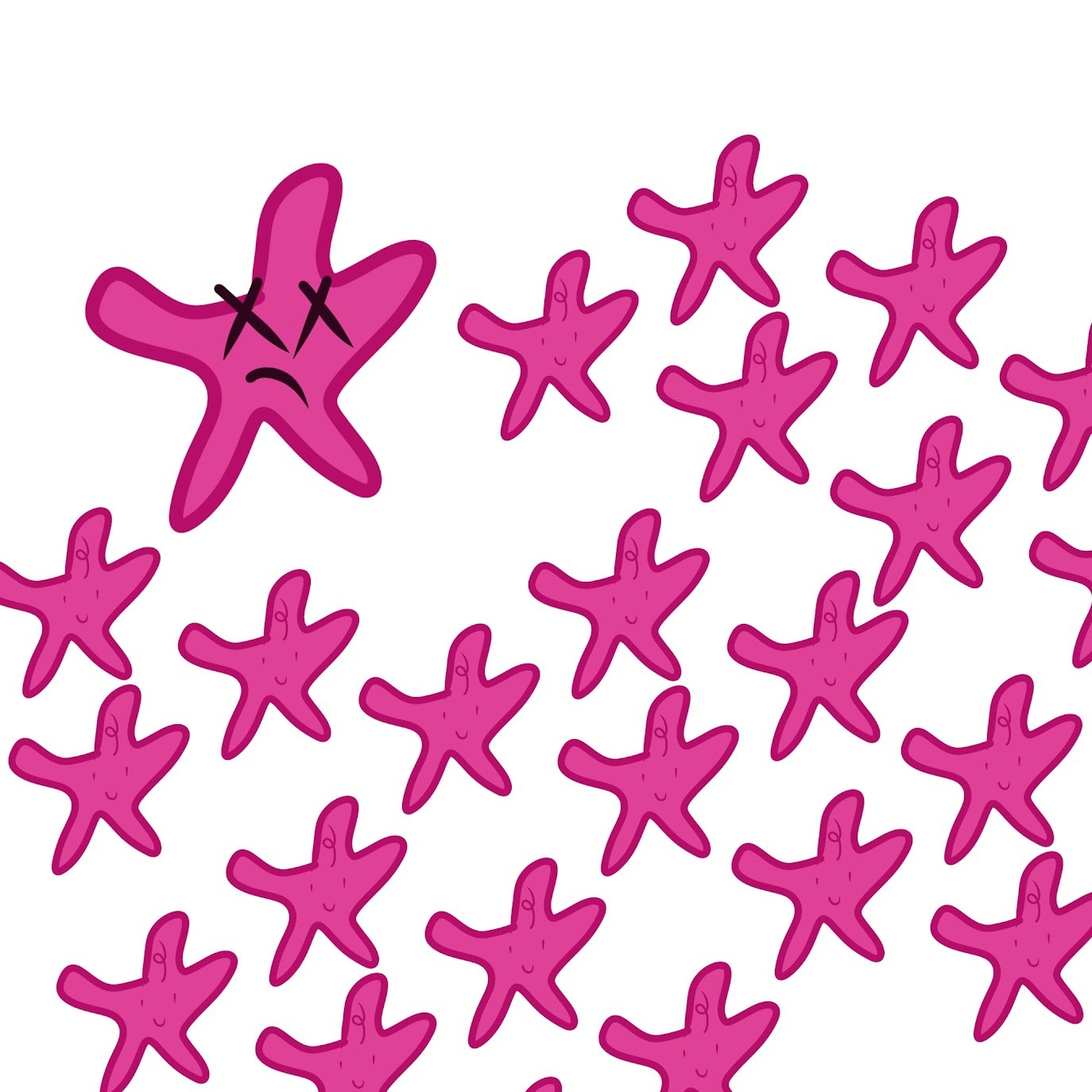
Produces many offspring once and die; favored in highly variable or unpredictable environments
Iteroparity (repeated reproduction)
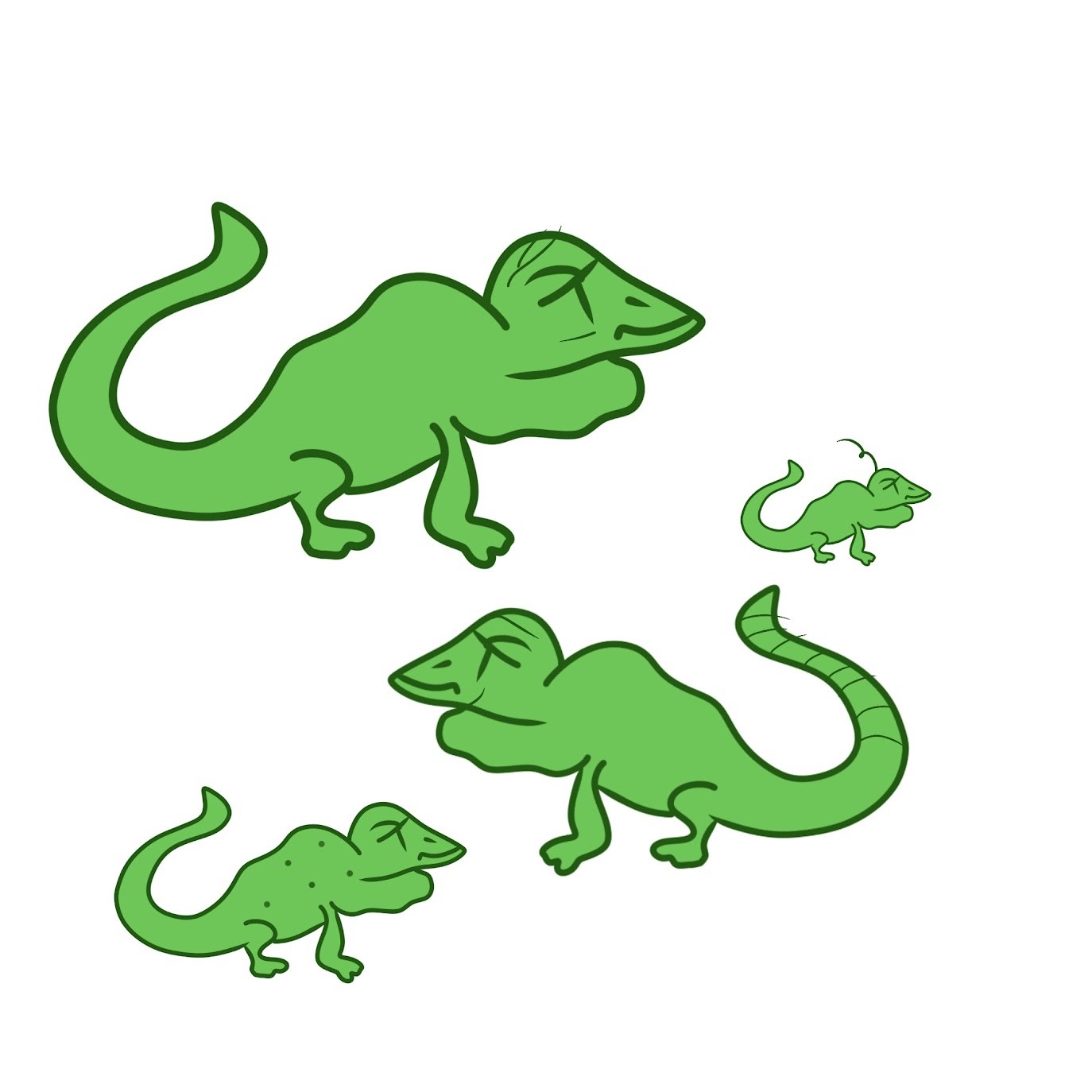
Produces offspring repeatedly; favored in more stable and predictable environments where survival is more likely
K-selection
selects for life history traits that are advantageous at high population densities (populations living at a density near carrying capacity, K)
R-selection
selects for life history traits that are advantageous at low population densities (populations living well below carrying capacity, such that the intrinsic rate of increase, r, is maximized)
Demographic Transition
The move from the first state (zero population growth= high birth rate - high death rate) to the second state (zero population growth= low birth rate - low death rate)
Resource Partitioning
Ecologically similar species can coexist in a community if there are one or more significant differences in their niches
Fundamental niche
Niche potentially occupied by a species
Realized niche
Niche actually occupied bu a species
Spatial niche partitioning
The presence of one species limits the realized niche of another species
Temporal niche partitioning
One species will adjust time of activity (if two species are nocturnal, one will become diurnal)
Obligate mutualism
One species cannot survive without the other
Facultative mutualism
Both species can survive alone, but when together the +/+ interaction benefits both species
Commensalism
+/0 interaction in which one species benefits and the other is neither harmed nor helped
2 components contributing to species diversity
Species richness (total # of different species in a community) and relative abundance (proportion of each species represents the total individuals in the community)
Energetic hypothesis
Suggests that the length of a food chain is limited due to inefficient energy transfer (only ≈10% of the energy stored in organic matter at each trophic level is converted to the organic matter at the next level)
3 types of species that play a large role in communities
Dominant species, Keystone species, and Ecosystem engineers
Dominant Species
Species that are the most abundant or have the largest biomass (including invasive species); most competitive and/or most successful at surviving
Keystone Species
Exerts strong control on a community by their ecological roles or niches (not necessarily abundant)
Example: alligator holes/nests provide shelter for a variety of species
Ecosystem Engineers (Foundation Species)
Cause physical changes in the environment that affect community structure (ex. beaver dams)
Disturbance
An event that changes a community by removing organisms or altering resource availability
Intermediate disturbance hypothesis
Suggests that moderate levels of disturbance can foster greater diversity than either high or low levels of disturbance
High levels of disturbance...
Exclude many slow-growing species
Low levels of disturbance...
Allow dominant species to exclude less competitive species
Human disturbance
Humans have the greatest impact on biological communities worldwide, and human disturbance to communities usually reduces species diversity
What 2 factors affect a community's species diversity?
Latitude and area
Evapotranspiration
Evaporation of water from soil + transpiration of water from plants; function of solar radiation, temperature, and water availability
Potential Evapotranspiration
the measure of potential water loss, assuming water is available; determined by the amount of solar radiation and temperature
Relation between evapotranspiration and species richness
The greater the evapotranspiration, the greater the species richness and vice versa (log graph)
In the Island Equilibrium model, species richness on islands depends on 3 factors:
-Island size– Distance from the mainland– Immigration and extinction
In the Island Equilibrium model, an equilibrium will be reached when the rate of immigration...
equals the rate of extinction
Energy _____ _____ ecosystems
Flows through
Chemicals _____ _____ ecosystems
Cycle within
First law of thermodynamics and energy/matter flow in an ecosystem
Energy enters an ecosystem as solar radiation, some is transformed into chemical energy by plants that are transferred to other organisms, and is ultimately lost as heat (nothing created/destroyed)
Second law of thermodynamics (energy exchange increases entropy) and energy/matter flow in an ecosystem
energy conversions are not completely efficient, and some energy is always lost as heat
Autotrophs
build molecules themselves using photosynthesis or chemosynthesis as an energy source
Heterotrophs
Depend on the biosynthetic output of other organisms
Tropic levels
Primary producers (autotrophs) → Primary consumers (herbivores) → Secondary consumers (carnivores) → Tertiary consumers (carnivores that feed on other carnivores) → Detritivores/decomposers (consumers that derive energy from detritus, nonliving organic matter)
Primary production
The amount of light energy converted to chemical energy by autotrophs during a given time period; limited by amount of solar radiation
Gross primary production (GPP)
Total primary production, measured as the conversion of energy from light to organic chemical energy per unit time
Net primary production (NPP)
amount of new biomass added in a given area over a given time period, not the total biomass of autotrophs
Equal to GPP minus energy used by primary producers for respiration
Per unit area, which ecosystems are among the most productive?
Tropical rain forests, estuaries, and coral reefs
Marine ecosystems regarding productivity among the major ecosystems on Earth
Marine ecosystems are relatively unproductive per unit area, but contribute much to global net primary production because of their volume
Limiting nutrient
An element that must be added for production to increase in an area
What elements most often limit marine production?
Nitrogen and phosphorous
What limits primary production in terrestrial ecosystems?
Soil (which includes nitrogen and phosphorous)
Secondary production
The amount of chemical energy in consumers’ food converted into new biomass during a given period of time
Production Efficiency
The fraction of energy stored in assimilated food that is not used for respiration
Birds and mammals have efficiencies in the range of ____ because of the high cost of endothermy
1-3%
Fishes have production efficiencies of around _____%
10%
Insects and microorganisms have efficiencies of ≥_____%
40%
Innate Immunity
Is the first, most general mechanism of defense
The cells and signaling molecules in the initial stages of the inflammatory response are
Mast cells and histamines
Clonal selection and differentiation of B cells activated by antigen exposure lead to:
Plasma cells that secrete antibodies for the antigen
A newborn that lost function of the thymus would most likely
Be unable to differentiate and mature T cells
An antibody has a light chain made up of
One C region and one V region
How is a viral antigen recognized by T cells?
Antigen fragment is presented by MHC I to T cell receptor
_____ is a characteristic feature of adaptive immunity but not innate immunity
Memory
What is crucial to the activation of the adaptive immune response?
Presentation of MHC-antigen complex on a cell surface
An epitope associates with which part of an antigen receptor or antibody?
Variable regions of heavy and light chains combined
What supports the argument that viruses are non-living?
They do not perform metabolic processes
Which is typical of the lytic cycle of a bacteriophage?
Large number of phages released at a time
What is the function of reverse transcriptase in retroviruses?
Uses viral RNA as a template for DNA synthesis
What is not a shape of a virus?
Bacilli
Phages that use both the lytic and lysogenic cycles are called
Temperate phages
Adherence to the intestinal lining by a bacterium is due to its possession of
Fimbriae
Antibiotic-resistant genes of bacteria are typically found within the
Plasmid
Bacterial populations cannot result from
Meiosis
Photoautotrophs use
Light for energy and CO2 for carbon
Following conjugation with an Hfr cell, the recipient bacterium is called
recombinant F-
What is an important feature of most terrestrial biomes?
Vegetation demonstrating vertical layering
2 plant species that appear quite similar but are distantly related likely represents
Convergent evolution
Turnover of water in temperate lakes during the spring and fall is called by
changes in water density as seasonal temperatures change
If you wanted to swim in a clear lake, you would do well to choose diving into
An oligotrophic lake
Which environmental factors are key to controlling the structure of aquatic biomes?
Oxygen concentrations and nutrient levels
Which lake zone would be absent in a very shallow lake?
Aphotic zone
During exponential growth, a population always
Grows at its maximum per capita rate
A graph depicting logistic growth shows
An "S" or sigmoidal shaped curve
What causes populations to shift most quickly from exponential to logistic growth?
Competition for resources
Which pair most accurately describes life-history traits for a stable population of wolves?
Iteroperous, K-selected
What about populations in industrialized countries is incorrect?
Birth rates and death rates are high
2 species are competitors and 1 is removed; the remaining species would be expected to
Expand its realized niche
An example of commensalism:
Egrets eat insects stirred by grazing bison
What is an example of Müllerian mimicry?
2 species of unpalatable butterfly with the same color pattern
≈How many kg of carnivores (secondary consumers) can be supported by 1000kg of plant material?
10kg
What community with 100 individuals among 4 species (W, X, Y, Z) would be most diverse?
25W, 25X, 25Y, 25Z
Between heterotrophs, herbivores, carnivores, and primary consumers, which term encompasses all the others?
Heterotrophs
To recycle nutrients, an ecosystem must have, at minimum:
producers and decomposers
An example of a primary producer:
Phytoplankton
What has the greatest effect on rate of chemical recycling in an ecosystem?
Rate of decomposition
Why is terrestrial productivity higher in equatorial climates?
increased temperature, increased water availability, and increased sunlight
A measure of the total biomass accumulation during a given period is called
Net ecosystem production
The use of living organisms to detoxify an ecosystem is called
Bioremediation
The specificity of a particular antibody for its target epitope is determined by the
Variable regions
What is the correct sequence in which the following occur during a primary humoral immune response?
1. B cell activation
2. Helper T cell activation
3. Plasma cell differentiation and proliferation
4. Antibody secretion
5. Presentation of antigen on class II MHC proteins
5, 2, 1, 3, 4
What is false regarding prokaryotes in general?
They are not very highly evolved
What is false regarding gram negative bacteria?
tend to be less antibiotic resistant than gram positive bacteria